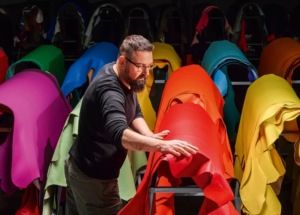Things to do
Autumn Holiday 2021: Scent of a winner
This article is more than 4 years old.

(photo: www.hermes.com
Hermès in the Making
Oct 15-24, open Fri-Wed 10:00-18:00, Thu 10:00-21:00; Danish Architecture Center, Bryghusgade 10, Cph K; free adm; dac.dk
Many adults know that feeling when they’re suddenly hit by a scent that takes them straight back to their childhood. More often, it’s related to the weather and the flora and, just like that, you’re back in the 1970s.
Never underestimate the important role the sense of smell plays in our development: good and bad.
From the delicious aromas wafting out of Mum’s kitchen to the putridness of a rotten egg you hid in a cupboard to avoid, they shape our memories and who we are.
They help to broaden our knowledge of the world around us from an early age and often they’re a great leveller, as the sense of smell knows no age disparity.
Complete culmination
So imagine how excited your children might get if you challenged them to make their own fragrance.
Their whole life will flash before them as they furiously try to recall all their favourite whiffs, from erasers that smell of citrus, to flowers picked up on halcyon summer days in the countryside, with a dollop of Roald Dahl thrown in for good measure.
Well, the French fashion house Hermès is doing exactly that during the autumn holiday at the Danish Architecture Center
Its pop-up exhibition ‘Hèrmes in the Making’, which is aimed at children and free to attend, lifts the lid on all matters design.
If your children play their cards right, they can leave with their own fragrance and a whole load of personalised stuff: notebook, design badges, keyrings, you name it!
Home of design
DAC is a fitting venue, as Hèrmes is basically an architecture firm, but on a small scale.
Its exhibition will be brimful with smiths, artisans and stylists, designing all manner of household goods and accessories, engraving, hand-stitching and bejewelling. It’s all about the details!
Watch them work and listen to them talk about their craft: the know-how, the importance of good materials, and the long hours that went into their craft.
There will be interactive installations and sensory experiences for both adults and children: a chance to test your creativity and dexterity.
Who knows, maybe one of your family will discover a talent they didn’t know they had.










































